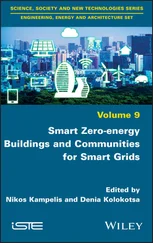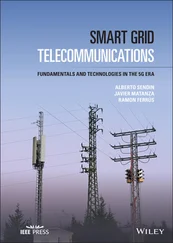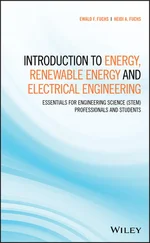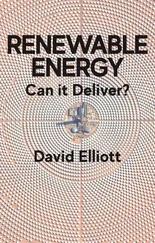1.1.6.1 Geothermal Provinces of India
In India, nearly 400 thermal springs occur (Satellites like the IRS-1 have played an important role, through infrared photographs of the ground, in locating geothermal areas. The Puga valley in the Ladakh region has the most promising geothermal field.), distributed in seven geothermal provinces. These provinces include The Himalayas: Sohana: West Coast; Cambay: Son-Narmada-Tapi (SONATA): Godavari and Mahanadi [14].
These springs are perennial and their surface temperature range from 37°C to 90°C with a cumulative surface discharge of over 1,000 L/m. The provinces are associated with major rifts or subduction tectonics and registered high heat flow and high geothermal gradient. For example, the heat flow values and thermal gradients of these provinces are 468 mW/m 2; 234°C/km (Himalayas); 93 mW/m 2; 70°C/km (Cambay); 120–260 mW/m 2; 60–90°C/km (SONATA); 129 mW/m 2; 59°C/km (West Coast); 104 mW/m 2; 60°C/km (Godavari) and 200 mW/m 2; 90°C/km (Bakreswar, Bihar).
The reservoir temperature estimated using the above described geothermometers are 120°C (West Coast), 150°C (Tattapani), and 200°C (Cambay). The depth of the reservoir in these provinces is at a depth of about 1 to 2 km.
These geothermal systems are liquid dominated and steam dominated systems prevail only in Himalayan and Tattapani geothermal provinces. The issuing temperature of water at Tattapani is 90°C, at Puga (Himalaya) is 98°C, and at Tuwa (Gujarat) is 98°C. The power-generating capacity of these thermal springs is about 10,000 MW (Ravi Shanker, 1996). These are medium enthalpy resources, which can be utilized effectively to generate power using binary cycle method.
Since majority of these springs are located in rural India, these springs can support small-scale industries in such areas. Dehydrated vegetables and fruits have a potential export market and India being an agricultural country, this industry is best suited for India conditions.
Map of India showing the geothermal provinces, heat flow values (mW/m 2: in italics) and geothermal gradients (°C/km). I: Himalaya; II: Sohana; III: Cambay; IV: SONATA; V: West Coast; VI: Godavari; VII: Mahanadi. M: Mehmadabad; B: Billimora.
All the geothermal provinces of India are located in areas with high heat flow and geothermal gradients. The heat flow and thermal gradient values vary from 75–468 mW/m 2and 59–234°C, respectively. Deep Seismic Sounding (DSS) profiles were carried out across several geothermal provinces (Son-Narmada-Tapi; West Coast and Cambay) to understand the crustal structure.
1. Akbarali, M.S., Subramanium, S.K., Natarajan, K., Real and Reactive Power Control of SEIG Systems for Supplying Isolated DC Loads. J. Inst. Eng. India Ser. B , 99, 587–595, 2018, https://doi.org/10.1007/s40031-018-0350-8.
2. Akbarali, M.S., Subramanium, S.K., Natarajan, K., Modeling, analysis, and control of wind-driven induction generators supplying DC loads under various operating conditions. Wind Eng. , pp. 1–16, 2020, https://doi.org/10.1177/0309524X20925398.
3. Yuldoshevb, A., Shoguchkarova, S.K., Kudratov, A.R., Jamolov, T.R., A Study of the Parameters of a Combined Photo-Thermoelectric Installation under Field Conditions. Appl. Sol. Energy , 56, 2, 125–130, 2020.
4. Joardder, M.U.H., Halder, P.K., Rahim, M.A., Masud, M.H., Solar Pyrolysis: Converting Waste Into Asset Using Solar Energy, in: Clean Energy for Sustainable Development , M.G. Rasul, A. k. Azad, S.C. Sharma (Eds.), pp. 213–235, Academic Press, United Kingdom, 2017, https://doi.org/10.1016/B978-0-12-805423-9.00008-9.
5. Prem Kumar, T., Naveen, C., Premalatha, M., Performance Analysis of 2 in 1 Parabolic Trough Collector for Both Hot Water and Hot Air Production for Domestic Household Applications. Appl. Sol. Energy , 55, 397–403, 2019.
6. Qandil, H., Wang, S., Zhao, W., Application-based design of the Fresnel lens solar concentrator. Renewables: Wind, Water, Solar , 6, 3, 1–13, 2019.
7. Badal, F.R., Das, P., Sarker, S.K. et al. , A survey on control issues in renewable energy integration and microgrid. Prot. Control Mod. Power Syst. , 4, 8, 2019.
8. Agarwal, V., Aggarwal, R.K., Patidar, P., Patki, C., A novel scheme for rapid tracking of maximum power point in wind energy generation systems. IEEE Trans. Energy Convers. , 25, 1, 228–36, 2010.
9. Bridgwater, A.V., Review of fast pyrolysis of biomass and product upgrading. Biomass Bioenergy , 38, 68–94, March 2012.
10. Orozco, R., Redwood, M.D., Yong, P., Cadellari, I., Towards an integrated systems for Bio-energy: Hydrogen production for Escherichia Coil and use of palladium coated waste cells for electricity generation in a fuel cell. Biotechnol. Lett. , 32, 12, 1837–45, December 2010.
11. Picarelli, A. and Vargiolu, T., Optimal management of pumped hydroelectric production with state constrained optimal control. J. Econ. Dyn. Control . in press, corrected proof Available online 10 June 2020, 103940, vol. 126, pp. 1–24, May 2021.
12. Majorowicz, J. and Grasby, S.E., Deep geothermal energy in Canadian sedimentary basins VS. Fossils based energy we try to replace – Exergy [KJ/KG] compared. Renewable Energy , 141, 259–277, October 2019.
13. Pollack, A. and Mukerji, T., Accounting for subsurface uncertainty in enhanced geothermal systems to make more robust techno-economic decisions. Appl. Energy , 25415, 113666, November 2019.
14. Van Erdeweghe, S., Van Bael, J., Laenen, B., D’haeseleer, W., Optimal configuration for a low-temperature geothermal CHP plant based on thermoeconomic optimization. Energy , 17915, 323–335, July 2019.
1 *Corresponding author: chamuvins@gmail.com
2
Present Power Scenario in India
Niraimathi R.1*, Pradeep V.2, Shanthi M.3 and Kathiresh M.4
1Department of EEE, Mohamed Sathak Engineering College, Kilakarai, India
2Department of EEE, Alagappa Chettiar College of Engineering and Technology, Karaikudi, India
3Department of ECE, University College of Engineering, Ramanathapuram, India
4Department of EEE, PSG College of Technology, Coimbatore, India
Abstract
The major chunk of power generation in India is done by thermal power plants spread across the nation. These plants are situated near to the coal reserves and near major ports. The working of thermal power plant along with major thermal plants of India is discussed. Indian motherland is blessed with huge potential of hydropower which stands second in producing the highest amount of electric power after coal-based plants. Renewable energy is the fastest-growing in this sector. Solar and wind energy–based power plants are discussed. The promising source for future energy is nuclear power plants. Hence, due importance has been paid to these plants. Specific challenges and opportunities in operating the various power plants are also discussed. India, as a vast land, necessitates bulk power transmission corridors to connect generating stations that are located in close proximity with the sources to the load centres and it is one of the world leaders in this field. This necessitates a discussion of various bulk power transmission lines.
Keywords:Power sector scenario in India, thermal power, gas turbine power plant, hydropower, solar power, wind power
Electrical power is the fulcrum for leveraging the economies, as most activities of the present civilization like agriculture and manufacturing revolve with it and change the living standard of people.
Читать дальше












